
Few decisions impact your efficiency, product quality, and long-term growth as much as the equipment you choose for your custom packaging solutions. Yet for many manufacturers, especially those in the middle of scaling or launching new product lines, selecting the right systems can feel like a guessing game.
Choosing the wrong labeling or packaging equipment can lead to serious bottlenecks. Whether it's missed throughput goals, labels that don’t apply cleanly, or equipment that’s incompatible with your container types, the wrong setup can slow you down and limit your flexibility. And in fast-paced markets, that kind of drag can quickly turn into lost revenue.
So, how can you choose the best packaging equipment? It starts with asking the right questions about your production volume, packaging format, and long-term goals. Let’s walk you through the key factors to consider and help you match your needs to the right type of labeling equipment.
Start by Aligning Your Packaging Equipment With Throughput
Before you look at features or configurations, step back and assess your output. Your production volume will influence everything from the size and speed of your equipment to the level of automation you’ll need.
- Small batch production may benefit from compact, semi-automatic equipment that offers precise labeling control without the overhead of a high-speed system.
- Mid-range producers often need more flexibility. Look for equipment that you can quickly change over between runs, but still maintains consistency across units.
- High-volume operations require fully automated systems that can maintain speed and accuracy around the clock.
Also, consider your growth plans. Will you be increasing volume or expanding into new product lines in the next year or two? Investing in scalable packaging equipment now can save you the cost and disruption of a full replacement later.
Make Sure Your Equipment Fits the Packaging
Your containers and the materials they’re made of play a big role in choosing the best packaging equipment. Is your packaging rigid or flexible? Are your containers round, oval, flat, tapered, or irregularly shaped?
Labeling equipment must accommodate the shape, size, and material of your packaging while ensuring accurate and secure application.
Some custom packaging solutions present additional challenges:
- Curved or non-flat surfaces can make label alignment tricky.
- Flexible pouches may need precise handling to prevent wrinkles.
- Transparent containers may require careful label placement for shelf appeal.
The more complex your packaging, the more important it is to find the best packaging equipment that’s intentionally built, or at least highly adaptable, to handle those challenges.
Choose the Right Labeler for the Right Job
Labeling equipment is not one-size-fits-all. Different systems are designed for different applications and packaging formats.

Here’s a quick guide to the main types:
- Front and Back Labelers: Ideal for oval or flat-sided containers that require labels on both the front and back. Common in the personal care, food, and beverage industries.
- Wrap Around Labelers: Designed for cylindrical containers like bottles and jars. A single label wraps around the entire circumference. Popular for beverages, sauces, and cosmetics.
- Top and Bottom Labelers: Apply labels to either the top or bottom (or both) of trays, boxes, and clamshell containers. Great for prepared foods, baked goods, and meal kits.
- Shrink Sleeve Labelers: Use heat to conform a label around the entire surface of a container, including irregular shapes. These are excellent for 360° branding, tamper-evident features, and products in markets like energy drinks or cleaning supplies.
By understanding the strengths of each system, you can match your equipment choice with your custom packaging solutions and industry requirements.
Let Your Business Goals Guide Your Equipment Strategy
What are you optimizing for: speed, flexibility, cost control, or quality assurance?
If you’re focused on high throughput, automated systems may provide the consistency and speed you need. But if you run frequent product variations or shorter batch sizes, flexibility might take priority over speed. In those cases, the ability to switch seamlessly between product types, without lengthy setup times, can be a major advantage.
Other considerations include:
- Semi-Automatic vs. Fully Automatic: The former requires more labor but may be more cost-effective for small batches. The latter can drastically reduce labor costs and human error over time, especially valuable in high-volume environments where precision and consistency matter most.
- Customization and Changeovers: How quickly can the system adapt to different SKUs or packaging sizes? Downtime during transitions can add up fast, so equipment that simplifies adjustments can save time and labor in the long run.
There’s no one “right” answer, it depends on your goals and where you are in your business lifecycle. Taking the time to assess what matters most now and what you’ll need later ensures your packaging equipment supports current demands and future growth.
Don’t Overlook These Details Before You Buy
Don’t overlook the day-to-day realities of operating your equipment. Even the most advanced equipment can become a bottleneck if it doesn’t align with the realities of your space, team, or support structure.
Considering these practical factors early in the decision-making process can help you avoid costly surprises later on:
- Facility Layout and Floor Space: Make sure the equipment fits comfortably and doesn’t interrupt existing workflows.
- Operator Training and Staffing: Do you have the team in place to run and maintain more advanced equipment?
- Ease of Maintenance and Support: Downtime can be costly. Look for packaging equipment backed by a reliable support team, easy access to parts, and minimal maintenance requirements.
- Changeover Time: The faster your team can switch between product lines, the more efficiently you’ll run your facility.
Thinking through these logistical details ensures your new packaging equipment won’t just look good on paper, it’ll deliver real, consistent value on the production floor. These factors all contribute to your total cost of ownership and ultimately, your return on investment.
Pack Leader USA’s Labeling Solutions That Grow With You
At Pack Leader USA, we understand that your labeling equipment should work with your business, not against it. That’s why we focus on building systems that aren’t just high-performing, but also practical, adaptable, and easy to integrate into your existing workflow.

Whether you're running a lean operation or managing a growing production team, our equipment is designed to keep your line moving without unnecessary complexity.
Our systems are:
- Easy to operate, set up, and maintain, with no steep learning curve or specialized operators required.
- Built for fast turnarounds and efficient changeovers, so you don’t lose time when production needs shift.
- Versatile across multiple product types, giving you the flexibility to grow or diversify your offerings.
We know that no two packaging lines are exactly alike, which is why we design our labelers to adapt to your packaging equipment.
Whether you’re just starting out or scaling up, we offer reliable solutions that evolve with your production needs and help you stay competitive in a changing market.
Take the Guesswork Out of Packaging Equipment
Choosing the right custom packaging solutions doesn’t have to be overwhelming. By understanding your production volume, container types, and business goals, you can confidently invest in systems that will boost efficiency, improve product consistency, and support your long-term growth.
Want help making the right choice?
Download our free resource, The Practical Guide to Choosing Labeling Equipment, your step-by-step companion for identifying the best fit for your packaging line.
.webp?width=200&height=114&name=2x-Packleader-logo-large%20(1).webp)

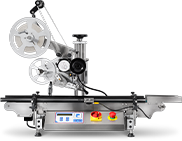
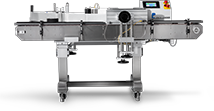
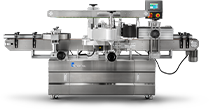
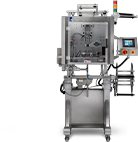
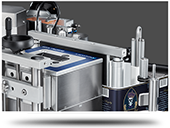
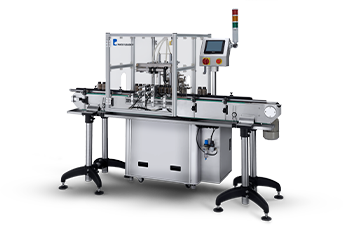
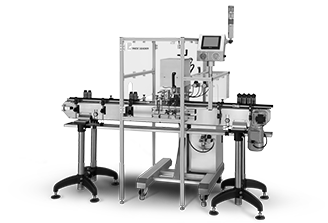
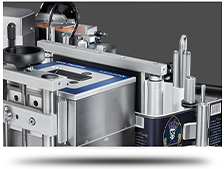





.webp?width=360&name=2x-color-logo%20(1).webp)